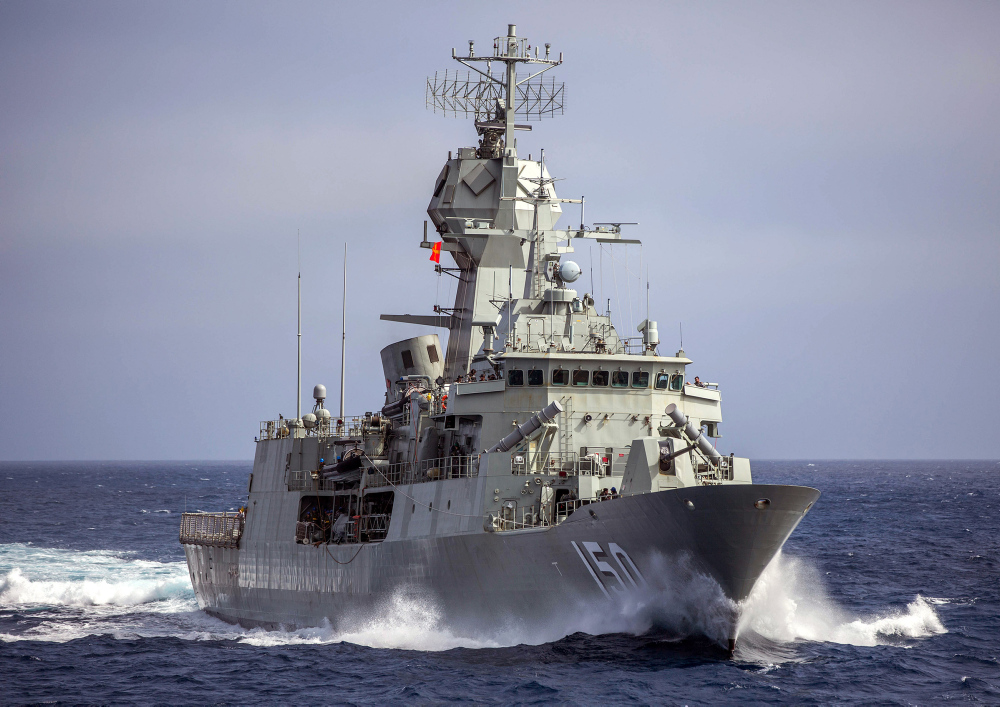 The 2016 Defence White Paper represents the most ambitious plan to regenerate Royal Australian Navy since World War II—at least according to the Turnbull government. The Navy will receive approximately $48.75 billion for defence capability projects over the next decade, allowing the force to conduct challenging warfare operations, meet future operational demands and undertake a range of tasks including patrols, anti-pirate operations, border security and hydrographic survey.
The 2016 Defence White Paper represents the most ambitious plan to regenerate Royal Australian Navy since World War II—at least according to the Turnbull government. The Navy will receive approximately $48.75 billion for defence capability projects over the next decade, allowing the force to conduct challenging warfare operations, meet future operational demands and undertake a range of tasks including patrols, anti-pirate operations, border security and hydrographic survey.
The next decade will be busy for RAN, as the force acquires and develops a range of key platforms. Navy will see:
- The acquisition of 12 future submarines to replace 6 Collins-class submarines, for entry into service from the early 2030s. A rolling acquisition process to extend construction into the late 2040s to 2050, with a down select decision regarding bids from Japan, Germany and France expected in 2016
- Continuous production of nine future frigates to replace Navy’s eight Anzac-class frigates, to begin in South Australia in 2020, after a competitive evaluation process, for delivery from the late 2020s
- Three Hobart-class Air Warfare Destroyers (AWD) entered into service in the early 2020s. (To ensure the vessels keep pace with regional capabilities, continuous upgrades will be made throughout their service life.)
- 12 new offshore patrol vessels to replace the current fleet of 13 Armidale-class patrol boats. Construction to begin in 2018, for entry into service from the early 2020s.
- The progressive replacement of the current fleet of two large and four smaller ADF hydrographic survey vessels with a combination of military and commercial hydrographic and oceanographic survey capabilities from early 2020s
- 24 new-build MH-60R Seahawk naval combat helicopters currently being accepted into service, to enhance Navy’s anti-ship and anti-submarine warfare operations
In order to meet the potential capability gaps over the coming decades, the DWP pledged upgrades for a number of RAN’s current platforms. The Collins-class submarine will receive upgraded communication and sensor capabilities during periodic refits. Navy’s fleet of Anzac-class frigates will continue to be upgraded (five of eight are now completed) with a suite of anti-shipping missile defences including weapons, combat systems, and sensors with the CEAFAR radar. The Canberra-class LHDs will receive further investment to enhance sensors, countermeasures and weapons. Four Huon-class Coastal Mine Hunters will have their life extended until the 2030s to allow time to develop and evaluate remotely operated mine countermeasures. Finally, Bay-class landing ship HMAS Choules will be upgraded in 2017, with improved command and communications equipment, fitting aviation support systems and a new self-defence system.
Approximately 800 additional ADF positions will be allocated over the next decade to support this growing maritime force. The DWP acknowledges this workforce will need to continue to increase beyond this point, in order to operate the larger fleet of submarines.
HMAS Stirling in Perth and Fleet Base East in Sydney will receive upgrades to training, wharf and support facilities over the period to 2026, while training areas, testing ranges and other defence bases, including defence recruitment facilities, will be upgraded to support RAN’s capabilities.

